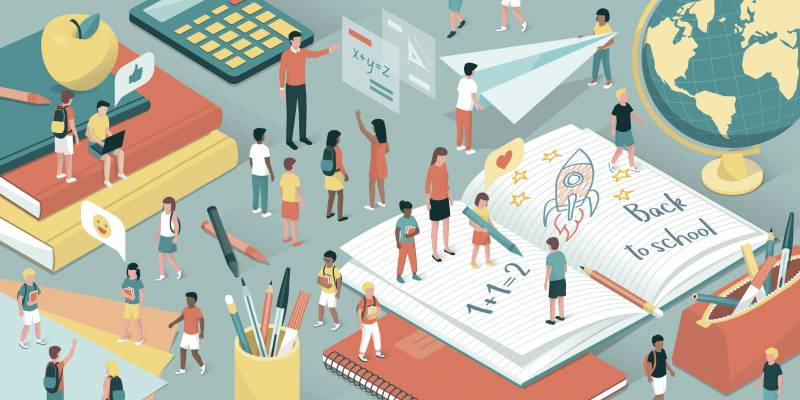To prepare for the start of the school year, Vicklund is concentrating on building learning skills. “It’s not so much that they didn’t learn about algebra this year. It’s more so that they didn’t have a chance to grow and learn together,” she said.
There’s been a lot of attention on learning loss, but framing student learning that way is a deficit perspective and only focuses on the ways students are off track. If students see adults in their lives recognizing the ways that they have grown, it communicates to kids that they are resilient. “They will need support in the next year in certain aspects,” said Vicklund. “But they’ll still come through with a lot more pluses as well in resiliency and adaptability.”
Vicklund is expecting the ways students learn with one another to be different, too. For example, if students are coming back from remote learning, they may feel more anxiety about speaking in front of the classroom or going up to the board to work out a math problem in front of peers. “I’ve already seen it,” said Vicklund. “If you are already anxious about school and you don’t quite feel safe here, you can’t learn and you can’t take other chances on top of that.”
Vicklund hopes to help students acclimate by being mindful of when they do classroom activities that require performance and high levels of interaction with the whole class. She’s opting to save these exercises for later in the school year.
When students start learning in school buildings full time, caregivers will also have a role to play in making sure students feel a sense of agency, according to Dorado. For example, if a child is having trouble getting started on homework after school, caregivers can give them options. She recommends saying something like, “You could do your homework now or you could take a 15 minute break, get something to eat, get some water, take a walk and do it then. Which would you prefer?” Dorado said these moments of giving over control can be very healing.
Create Opportunities for Connection Among Peers
Educators can also help students form better connections with their peers, which will be critical to students’ wellbeing and ability to learn. “Without the relationships, the academics definitely suffer,” said Tammy Stephens, a teacher at Bear Lake High School in Idaho. She noticed that students who experience a strong sense of connection feel less stressed and are more willing to try learning new things. Even students who were in school buildings last year may have struggled to connect with classmates when they were behind masks and six feet apart.
Younger students may have never been in the school building due to the pandemic, notes Tika Epstein, assistant principal at J.T. McWilliams Elementary School in Nevada. To help students acclimate to face-to-face learning, her school district provided an optional six-week summer acceleration program for elementary school-aged children with opportunities for social-emotional support, physical education, fine arts, project-based learning and academics throughout the day. They wanted to scaffold the learning experience before the school year started with extra individualized and small group support.
For older students, the isolation of remote learning has been especially hard because they need to socialize with people their age to receive affirmation about the hard things that they’re going through as they grow up.
“I am lucky to not only teach grade seven, but have a grade seven student at home too,” said Vicklund. “She is an only child and going through all of this on her own. And so I am constantly having to reassure her that she is not the only one going through social anxiety, body changes and other issues in her life.”
She plans on spending a lot more time doing cooperative activities and giving students more informal time to interact with each other to make up for the lack of connection many of her students had been feeling.
Families and emotional safety
Caregivers and educators may feel an urge to gloss over the pandemic and try to move on from the experience. According to Dorado, talking about the good and bad parts of the pandemic with children can help with healing. “If we simply pretend like it never happened,” she said, “then we lose the ability to learn from it.”
To help students feel a sense of emotional safety, Dorado encourages teachers to invite students to discuss the ways their families coped with the pandemic and integrate these practices into the classroom. Dorado invites educators to validate the time students spent at home because families will be essential in helping students adjust to the next school year.
Focusing on learning loss has devalued time spent with caregivers, according to Adam Jordan, professor of special education at the College of Charleston. Even for students who experienced challenges during remote learning, such as low engagement and participation in online classes, learning never stopped.
“I learned a lot from my dad, who was a welder on the weekend. I would learn how to stick metal together,” he said. “And it sparked curiosity in me. And now my son sits with me and we work on motorcycles. And it’s something that I didn’t learn at school.”


